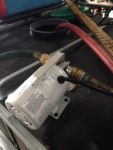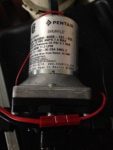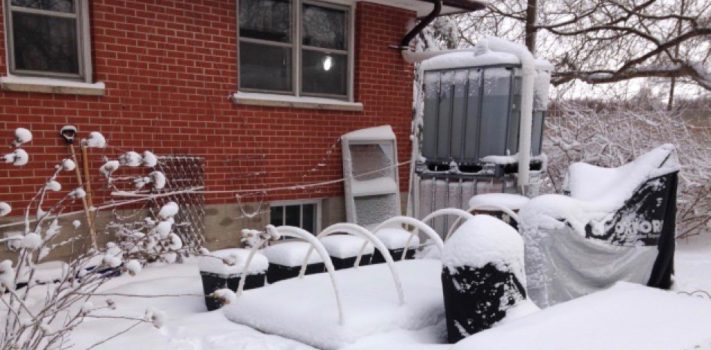Many folks might take water for granted as being a mundane issue, although readers of this blog might be the exception. No matter, please read on. Our adventure began when the municipality decided that they no longer wanted us as a customer.
“To really know something, one must go directly to people with immediate experience of the situation. You can’t really know by talking with someone who has only read about it.” – “The Great Taking”, by David Rogers Webb, p xxi.
I am not a professional writer. Instead, I am a strong-minded individualist who insisted on paying my own way through post-secondary education in natural and computer sciences, business, and economics – first working as a carpenter, eventually managing projects. Later, as an asset manager, I was responsible for million dollar budgets involving capital, vehicles, and equipment. I was then forcibly retired at the point that I informed my employer that he could not wear their mandated face mask. This was an honest answer, because as an analyst I could see no data supporting an actual ‘pandemic’, and as a Christian I would not endorse their falsehood.
Assessing Risk
When preparing for something, it behooves one to sit down and give thought to the risk one is setting out to mitigate.
As I write this, we find political risk is significantly high. The World Economic Forum (WEF) – best known for their sponsorship of the ‘pandemic planning exercise’ Event 201 in October 2019, weeks ahead of the ‘discovery’ of a ‘novel coronavirus’ announcement – has also constantly been talking about water. We best be aware of what is being said by this insane influential ‘think tank’ with a participant list that reads like the “Who’s Who” of world leaders, industrialists and financiers.
We find ourselves at a time when the government-run water distribution systems are contaminated with foreign substances – lead, as was reported in Flint, Michigan. And the water treatment policies are at best questionable, if not downright dangerous, and additives such as fluoride are of doubtful ‘science’.
Even out at the farm, water tables are down and they are up – even the best wells are not consistently reliable. Life is naturally risky.
Context
My account is developed from our experience of living a year and a half (so far) without a well and without a water main connection. While most of the essays on this blog aspire to the ideal of living in a rural context, reality requires many to live in an urban setting. The weather in this part of the continent tends to be cold although this year we don’t have a particularly harsh winter.
While many disparage California as the epitome of politics gone wrong – also in California – Pastor John McArthur was able to fight the recent lockdown mandates in court – and win that case. By contrast, in what is often considered to be the bastion of conservatism and freedom in Canada, Alberta pastors were being jailed for opening church on Sunday mornings. Charges were brought, and fines levied. While some were later dropped, others were fought in court. And inevitably whenever the question of ‘rights’ were raised in court, judges deferred to the government as unquestionably being in the right. Politically, that lands one on the broad road to tyranny, not justice.
Many may also have read that in 2022, in that nations capitol, Ottawa sent in the riot police when a peaceful contingent of protesting truckers decided to voice their concerns.
Although this account does not take place in Alberta or Ottawa, this was the very same year we received a letter from the local utility’s commission threatening to shut off our water supply if we failed to have a modern ‘SMART’ meter installed.
Now, there are several concerns associated with these modern electronic meters: Firstly, they are entirely opaque – you cannot read the meter without proprietary electronic tools (whereas, the existing meters have a human readable numeric display). Secondly, there is the deluge of microwave radiation that we are bombarded with daily because of such devices; and we ask, where are the safety studies? Thirdly, there are privacy concerns and the question of what are they actually doing with all that data they are collecting; our data.
By this stage I had had quite enough of the constant bully tactics. Instead of being manipulated and intimidated, I regarded this letter to be a challenge. Would we be able to survive here without supplied water? Perhaps we can learn something unconventional from this opportunity. Experiences which might be helpful to others.
Later in 2022, a nondescript junker Econoline van arrived at our door and the driver informed us that because we failed to make an appointment for the meter ‘upgrade’ they were here to shut off our water. It remained a moot point that they always got paid on time.
Our grandkids were standing right next to us at the door when he then, without any hint of concern for our well being, shut off the water at the street.
It has been a tumultuous start to the decade.
How Were We Prepared for This?
In recent years we had been working at expanding our gardening skills. While we enjoy watching flowers grow, things we could eat were becoming predominant. In order to provide un-chlorinated water for the garden, we had been collecting the rainwater accumulating in the eavestrough of our brick bungalow. A few years earlier, we had upgraded to a metal roof – it is reassuring not to have bits of asphalt shingle in the collected water. The fact that we had already built the basics of a collection system gave some level of confidence that we could go the next mile.
Collection System
At the downspout I had replaced the 3”x3” aluminum with 4 inch diameter PVC pipe leading to a couple of IBC totes that I picked up from a local old order farmer. The primary water collection system therefore is about 250 US gallons, 1000 Litres, per tote. In summer, I would fill both totes. In winter, I would only fill the first tote, as I only had one 800 watt stock tank heater.
In a complete grid-down scenario, this heater dependence would be a weakness which would need to be addressed. Our future plans included a cistern below the frostline, as below about three feet the soil never freezes.
The outlet of the downspout drips into the top opening of the collection tote. We cover the top opening of the tote with a mosquito screen to keep out the insects as well as the leaves and debris which wash off the roof. Several times a year I clean out the eavestroughs, but still they seem to accumulate lots of leaves which I really need to keep out of the water collection. The opening at the top of the tote is about twice the diameter as the PVC downspout – which in turn allows for overflow in case of a torrential downpour. The screen is attached to the tote top using large stainless steel hose clamps.
Storage System
I quickly needed to come up with a way to store water because winter freeze up was approaching quickly.
This house has a basement garage. It is a room that doesn’t freeze, as long as we are able to heat the rest of the house.
We have a natural gas forced-air furnace with both inverter and generator backup, as well as grid powered electric baseboard heaters in the basement, and a wood stove with a decent supply of dry firewood. In the department of redundancy, we don’t want pipes to freeze.
When water was shut off I made a trip to the friendly neighbourhood old order farmer – who sold me a couple more totes for the garage.
When the outdoor water collection tote approached full, I ran a garden hose into the garage. Rather than depend on gravity, I used a pony pump connected to a 30 micron filter to fill the storage totes in the garage. A pony pump is a small simple pump with male garden hose threads for input and output – used to transfer water.
 I have two such pumps, one using 120 volt alternating current (vac) household power, and a 12 volt direct current (vdc) battery power version which can be powered directly off the solar panel system. The solar panel system consists of one kilowatt photovoltaic (PV) array, 235 amp-hours (AH) of flooded deep cycle battery storage and a Samlex EVO-2224 pure sine wave inverter-charger. The system is able to maintain battery charge using the solar panels through a Morningstar controller, but also has independent inputs for grid power and generator power. As long as grid power is available I intend to use it – without ever being reliant on it.
I have two such pumps, one using 120 volt alternating current (vac) household power, and a 12 volt direct current (vdc) battery power version which can be powered directly off the solar panel system. The solar panel system consists of one kilowatt photovoltaic (PV) array, 235 amp-hours (AH) of flooded deep cycle battery storage and a Samlex EVO-2224 pure sine wave inverter-charger. The system is able to maintain battery charge using the solar panels through a Morningstar controller, but also has independent inputs for grid power and generator power. As long as grid power is available I intend to use it – without ever being reliant on it.
The intention behind the PV system was purely as backup power. I had been tinkering with solar panels for more than 20 years, and this is the configuration that I settled on. The EVO consistently supplies a very clean 18 amps continuously at 120 vac and will intermittently supply during surges in demand that are much higher than that, therefore it will easily power most reactive loads including electric motors.
When the water got shut off I also made a quick trip to the local RV store and I picked up a Shurflo 4008-101-E65 pump (pictured).
 And, since, two is one, and one is none – when Murphy’s Law kicks in – I also ordered a second pump, a different model, from a different vendor – a FloJet 04406143A. I wanted to see if one was any better than the other. They turned out to be roughly equivalent to each other. These RV pumps are designed to pressurize the pipes without requiring a pressure tank. They can be powered by 12 vdc – or 120 vac – depending on the model. I chose 12 vdc. I initially used a marine battery charger to power the 12 volts, until I installed a DC line from the PV system to that part of the house.
And, since, two is one, and one is none – when Murphy’s Law kicks in – I also ordered a second pump, a different model, from a different vendor – a FloJet 04406143A. I wanted to see if one was any better than the other. They turned out to be roughly equivalent to each other. These RV pumps are designed to pressurize the pipes without requiring a pressure tank. They can be powered by 12 vdc – or 120 vac – depending on the model. I chose 12 vdc. I initially used a marine battery charger to power the 12 volts, until I installed a DC line from the PV system to that part of the house.
(To be concluded tomorrow, in Part 2.)










